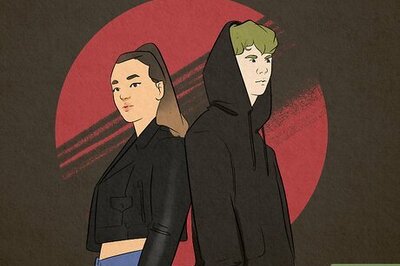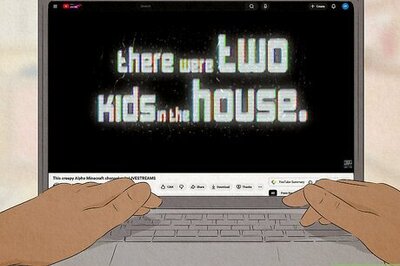
views
The prospect of Prime Minister Narendra Modi sharing the stage at the BRICS summit in Russia on October 22-23 with Russian President Vladimir Putin and Chinese President Xi Jinping grates on Western nerves. The presence at the summit of five new BRICS members Iran, Saudi Arabia, Egypt, the UAE, and Ethiopia will further darken the mood in the West.
The indictment by the US Department of Justice (DoJ) of Vikash Yadav, a former R&AW officer, was timed five days before Prime Minister Modi’s visit to Russia for the BRICS summit.
Coincidence? Possibly. But the manufactured case against Yadav and Nikhil Gupta, arrested in Prague in June 2023 and extradited to the US this year, had moved slowly till this point.
The indictment against Yadav, unsealed on October 17 by US federal prosecutors, is that he and Gupta hired a hitman (who turned out to be an American drug enforcement agent) to kill Gurpatwant Singh Pannun, a US citizen.
Pannun, a fugitive from Indian justice, has been designated as a terrorist by India. He has incited violence against Indian diplomats in North America and gone on live video threatening to bomb Indian passenger aircraft. These should be enough for any law-abiding country to prosecute Pannun. Instead, the US DoJ is prosecuting the Indian agents alleged to have plotted to assassinate him.
The detailed 18-page DoJ indictment does not mention, even once, Pannun’s status since 2020 as a designated terrorist in India and a fugitive from Indian justice who is accused of serious criminal offences against Indians, many committed in full public view on US soil.
The US routinely assassinates terrorists on foreign soil: in Iran, in Syria, in Pakistan, in Afghanistan, in Lebanon and elsewhere. But it does not tolerate any other country doing the same to designated terrorists on its soil.
That hypocrisy apart, the protection the United States provides a criminal like Pannun is an indictment of the US justice system. For a nation that provided no civil protection to its black citizens till the 1960s when the Civil Rights Act of 1964 was passed into law, the amorality on display is not surprising.
Russia, Russia, Russia
The elephant in the room is Russia. Washington has two clear foreign policy aims: one, weaken Russia terminally; two, stall China’s rise. It wants India to toe the Western line on both. India’s dalliance with Russia increasingly annoys the US-led West. It has tolerated India buying Russian crude in self-interest because the refined petrol and diesel from Indian refineries are needed in Europe to keep fuel prices low.
The US has meanwhile noted with concern the thaw in economic and trade ties between India and China. With the new US administration likely to impose steep tariffs on Chinese imports, the last thing Washington needs is India enhancing trade with China. That is exactly what is happening.
The US is happy to use India’s geography to police the Indo-Pacific. But it sees India as a subordinate following the West’s lead on Russia and China. That is a role the Modi government rejects. Tensions on this score have been slowly mounting. The Pannun indictment is a message from the US to India: don’t rise above your station.
What is that station? India’s GDP at current exchange rates is projected to be around $4 trillion. By Purchasing Power Parity (PPP), however, a more accurate measure, India’s GDP according to the latest World Bank figures is $14.53 trillion compared to America’s PPP GDP of $27.36 trillion. The gap is closing: India’s economy is growing at thrice America’s rate. The gap will narrow swiftly.
The real nightmare for Washington is a revival of Russia-India-China (RIC) trilateral summits. The last RIC summit was held in Buenos Aires, Argentina during a G20 summit in 2018. Xi called on the three countries to “advocate a new type of international relations”.
The standoff at the LAC has suspended RIC summits. With the recent trade thaw between India and China and an expanded BRICS with Saudi Arabia, Egypt, Iran, Ethiopia and the UAE, the contours of a new world order are taking shape.
If Donald Trump wins the 2024 presidential election, the trend will intensify. Trump has pledged to end the Russia-Ukraine war. In a thinly veiled criticism of the steady stream of lethal US weapons supplied to Ukraine, Trump called Ukrainian President Volodymyr Zelensky the “world’s best salesman”.
The US has used the war in Ukraine and the sweeping sanctions on Russia to weaken it permanently as a major power. But despite the West illegally seizing $300 billion in Russia’s foreign cash assets, sanctions haven’t crippled Russia. It is currently one of the fastest-growing economies in Europe while the economies of US allies Germany, Britain and France struggle.
New world order
Neocon think tanks in Washington have made war-room projections of the future world order. They don’t like what they see. Of the estimated total global GDP of $100 trillion, the combined GDP of the US-led West today is $55 trillion. The combined GDP of the expanded BRICS along with South America, Asia and Africa — broadly the Global South – is $45 trillion.
That balance is shifting. The West is growing at an average of 2 per cent a year. The Global South is growing at double that rate. Think tanks in Washington believe that, circa 2050, the combined GDP of the US-led West will rise to $75 trillion. But the combined GDP of the Global South will shoot up to $90 trillion.
The military and the technological balance of power too will swing in favour of the Global South, led by China and India.
By 2050, the US will be a white-minority country for the first time since the 1600s when European colonists arrived in North America. Native Americans who had lived there for millennia were quickly dispossessed of their land, slaughtered or marginalised.
By the 1700s, the white European population in the new colonies of North America had surpassed the population of its Native inhabitants even as shiploads of enslaved Africans began to arrive on America’s shores for a lifelong of servitude on cotton plantations that played an important part in building the US economy.
The clock is now turning back. The original immigrants (European colonists) came to America with guns, not visas. The new coloured immigrants, most of whom arrived with visas, will soon form a majority in the US, returning the continent to its roots.
The writer is an editor, author and publisher. Views expressed in the above piece are personal and solely those of the author. They do not necessarily reflect News18’s views.




















Comments
0 comment